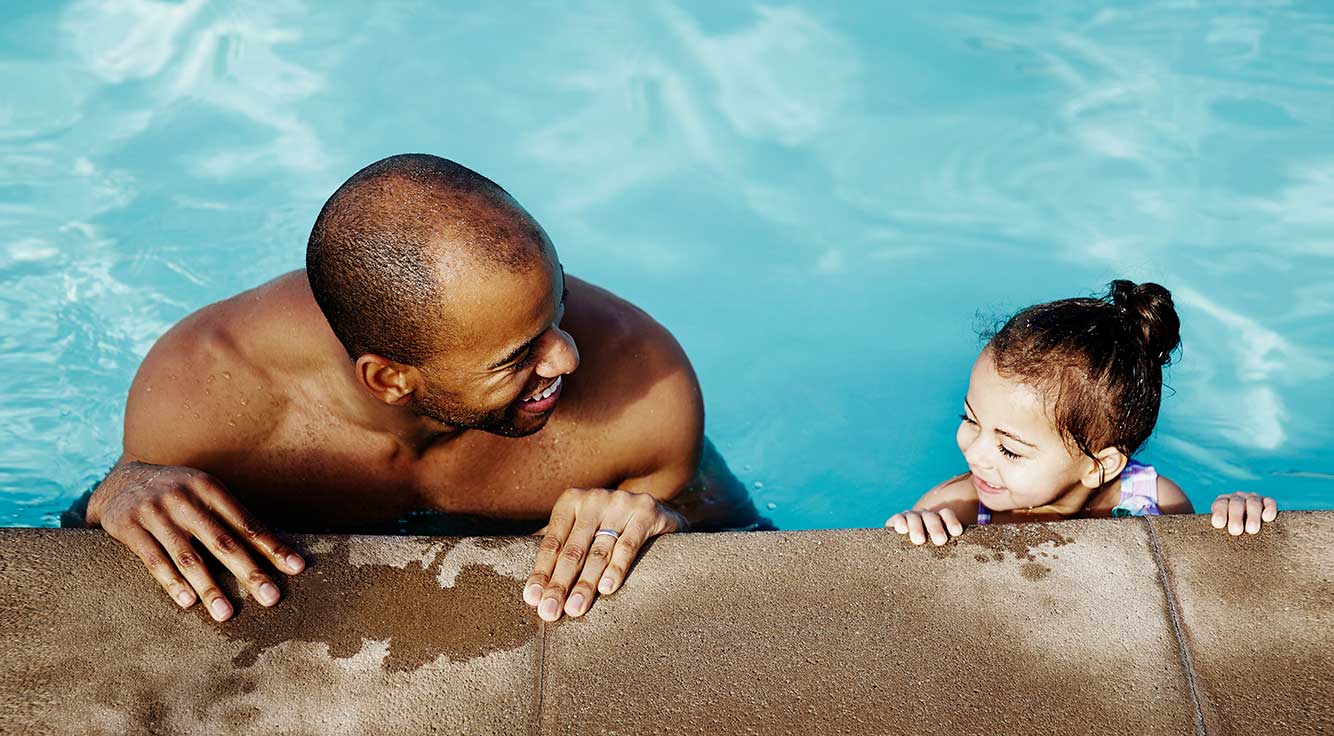
Swim safely this summer
Swimming in pools, lakes, and rivers are quintessential summertime activities. Swimming is also great exercise and a lot of fun — but it comes with certain risks. The American Academy of Pediatrics (AAP) notes that the leading cause of injury-related death in children 1 to 4 is drowning. And drowning is often quick and silent.1
Dr. Emma Germann, a pediatrician at Kaiser Permanente’s North Lancaster Medical Office in Salem, Oregon, offers advice on how to keep your child safe when they’re in or near water. So, keep water safety front of mind — while still enjoying the beautiful weather.
1. Be present
Never leave babies alone in a swimming pool or wading pool. When babies land face down in the water (from slipping or rolling over), it can be hard for them to turn over. Bathing seats and flotation devices are a helpful way to keep this from happening, but your full attention is a better safety strategy.
Per the American Academy of Pediatrics updated drowning prevention guidelines, it’s important to have “close, constant, and attentive supervision of young children” when they’re near any water. For beginning swimmers especially, the AAP recommends touch supervision. Touch supervision is when an adult watching a child is within arm’s reach. That way you can quickly help a child who may be having difficulty swimming.
2. Learn to swim
While knowing how to swim doesn’t guarantee prevention against drowning or other accidents, it’s a needed skill for anyone who spends time in or near the water. “An important drowning prevention tip is making sure everyone in the family can swim,” says Dr. Germann. “Learning to swim is like learning to read: a life-long skill that your children will take with them wherever they go.”
With a quick web search, you can often find community programs offering lessons in your area. Most will let you sit in on a class to make sure it’s a good fit for you and your child.
Remember, however, that learning to swim is only part of a drowning prevention strategy.2
3. Wear a life jacket on open water
“Life jackets remain another critical prevention tool against drowning,” says Dr. Germann. Always make sure your child wears a life jacket on boating or other outings. “Kids and adults, even if they’re strong swimmers, can have trouble in lakes and rivers because the water in Oregon tends to get so cold,” Dr. Germann cautions. “That makes it hard for swimmers to catch their breath, and they can get exhausted more easily.”
If you’re concerned that a life jacket won’t be provided, invest in one that your child can own.
4. Stay in designated areas
Avoid bodies of water that haven’t been deemed safe for swimming. At public beaches, stay within the established swimming zone (it’s usually marked with buoys). This not only ensures that the water is safe to swim in, but also keeps swimmers close enough for help to reach them quickly in case of an emergency.
More than 2 out of 3 children who suffered a drowning incident were not expected to be swimming — yet were found in water.3 As Dr. Germann notes, “This can happen while families are eating or playing near water. For this reason, it’s important to be extra vigilant when children are nearby any body of water.”
5. Use the “feet first” rule
A good rule for kids and grownups alike, entering the water feet first allows you to safely determine the water’s depth. It’s also a safer way to make sure there aren’t any unseen hazards under the surface.
6. Put up proper barriers
If you have a pool, make sure it has a cover that locks. Keep patio doors locked and place a broomstick in the lower track of sliding doors. It’s also important to install a 4-sided fence — at least 4 feet tall — around your pool to keep it separate from your house and the rest of the yard.3
The value of a watchful eye
With any outdoor activity, it’s a good idea to always keep your child in your line of sight. That way you’ll always be ready to help if your child gets into trouble.
To learn more about water safety for kids, visit our online preventing drowning page.
1“AAP Updates Recommendations to Prevent Drowning in Children,” American Academy of Pediatrics, March 15, 2019.
2See note 1.
3Sarah A. Denny et al., “Prevention of Drowning,” American Academy of Pediatrics, May 2019.
In the Spotlight – Find out what’s happening in your area:





